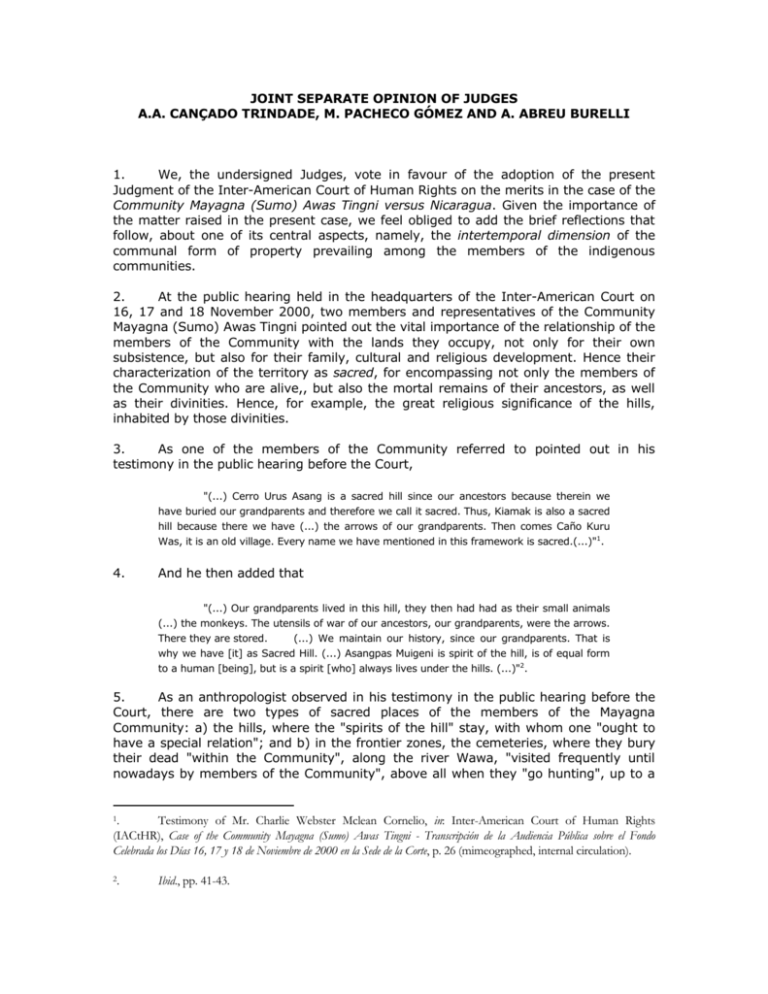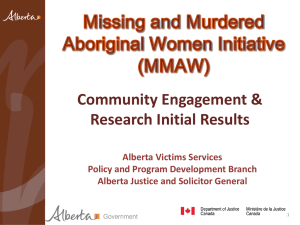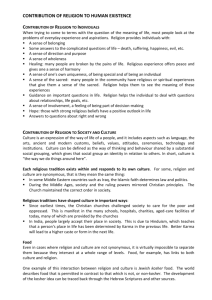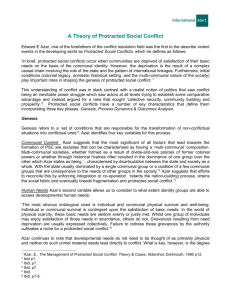INDICE DE TEMAS:
advertisement

JOINT SEPARATE OPINION OF JUDGES A.A. CANÇADO TRINDADE, M. PACHECO GÓMEZ AND A. ABREU BURELLI 1. We, the undersigned Judges, vote in favour of the adoption of the present Judgment of the Inter-American Court of Human Rights on the merits in the case of the Community Mayagna (Sumo) Awas Tingni versus Nicaragua. Given the importance of the matter raised in the present case, we feel obliged to add the brief reflections that follow, about one of its central aspects, namely, the intertemporal dimension of the communal form of property prevailing among the members of the indigenous communities. 2. At the public hearing held in the headquarters of the Inter-American Court on 16, 17 and 18 November 2000, two members and representatives of the Community Mayagna (Sumo) Awas Tingni pointed out the vital importance of the relationship of the members of the Community with the lands they occupy, not only for their own subsistence, but also for their family, cultural and religious development. Hence their characterization of the territory as sacred, for encompassing not only the members of the Community who are alive,, but also the mortal remains of their ancestors, as well as their divinities. Hence, for example, the great religious significance of the hills, inhabited by those divinities. 3. As one of the members of the Community referred to pointed out in his testimony in the public hearing before the Court, "(...) Cerro Urus Asang is a sacred hill since our ancestors because therein we have buried our grandparents and therefore we call it sacred. Thus, Kiamak is also a sacred hill because there we have (...) the arrows of our grandparents. Then comes Caño Kuru Was, it is an old village. Every name we have mentioned in this framework is sacred.(...)"1. 4. And he then added that "(...) Our grandparents lived in this hill, they then had had as their small animals (...) the monkeys. The utensils of war of our ancestors, our grandparents, were the arrows. There they are stored. (...) We maintain our history, since our grandparents. That is why we have [it] as Sacred Hill. (...) Asangpas Muigeni is spirit of the hill, is of equal form to a human [being], but is a spirit [who] always lives under the hills. (...)"2. 5. As an anthropologist observed in his testimony in the public hearing before the Court, there are two types of sacred places of the members of the Mayagna Community: a) the hills, where the "spirits of the hill" stay, with whom one "ought to have a special relation"; and b) in the frontier zones, the cemeteries, where they bury their dead "within the Community", along the river Wawa, "visited frequently until nowadays by members of the Community", above all when they "go hunting", up to a 1. Testimony of Mr. Charlie Webster Mclean Cornelio, in: Inter-American Court of Human Rights (IACtHR), Case of the Community Mayagna (Sumo) Awas Tingni - Transcripción de la Audiencia Pública sobre el Fondo Celebrada los Días 16, 17 y 18 de Noviembre de 2000 en la Sede de la Corte, p. 26 (mimeographed, internal circulation). 2. Ibid., pp. 41-43. 2 certain point as a "spiritual act"3. As another anthropologist and sociologist added, in an expertise, in the same hearing, the lands of the indigenous peoples constitute a space which is, at the same time, geographical and social, symbolic and religious, of crucial importance for their cultural self-identification, their mental health, their social selfperception4. 6. As it can be inferred from the testimonies and expertises rendered in the aforementioned public hearing, the Community has a tradition contrary to the privatization and the commercialization and sale (or rent) of the natural resources (and their exploitation)5. The communal concept of the land - including as a spiritual place and its natural resources form part of their customary law; their link with the territory, even if not written, integrates their day-to-day life, and the right to communal property itself has a cultural dimension. In sum, the habitat forms an integral part of their culture, transmitted from generation to generation. 7. The Inter-American Court has duly acknowledged these elements, in paragraph 141 of the present Judgment, in which it points out that "(...) Among the indigenous persons there exists a communitarian tradition about a communal form of the collective property of the land, in the sense that the ownership of this latter is not centered in an individual but rather in the group and his community. (...) To the indigenous communities the relationship with the land is not merely a question of possession and production but rather a material and spiritual element that they ought to enjoy fully, so as to preserve their cultural legacy and transmit it to future generations". 8. We consider it necessary to enlarge this conceptual element with an emphasis on the intertemporal dimension of what seems to us to characterize the relationship of the indigenous persons of the Community with their lands. Without the effective use and enjoyment of these latter, they would be deprived of practicing, conserving and revitalizing their cultural habits, which give a meaning to their own existence, both individual and communitarian. The feeling which can be inferred is in the sense that, just as the land they occupy belongs to them, they in turn belong to their land. They thus have the right to preserve their past and current cultural manifestations, and the power to develop them in the future. 9. Hence the importance of the strengthening of the spiritual and material relationship of the members of the Community with the lands they have occupied, not only to preserve the legacy of past generations, but also to undertake the responsibilities that they have assumed in respect of future generations. Hence, moreover, the necessary prevalence that they attribute to the element of conservation over the simple exploitation of natural resources. Their communal form of property, much wider than the civilist (private law) conception, ought to, in our view, be appreciated from this angle, also under Article 21 of the American Convention on Human Rights, in the light of the facts of the cas d'espèce. 3. Testimony of Mr. Theodore Macdonald, anthropologist, in ibid., pp. 67-68. 4. Expertise of Mr. Rodolfo Stavenhagen Gruenbaum, anthropologist and sociologist, in ibid., pp. 71-72. 5. Cf., e.g., the testimony of Mr. Charlie Webster Mclean Cornelio, member of the Community Mayagna, in ibid., p. 40, and the expertise of Mr. Rodolfo Stavenhagen Gruenbaum, anthropologist and sociologist, in ibid., p. 78. 3 10. The concern with the element of conservation reflects a cultural manifestation of the integration of the human being with nature and the world wherein he lives. This integration, we believe, is projected into both space and time, as we relate ourselves, in space, with the natural system of which we are part and that we ought to treat with care, and, in time, with other generations (past and future)6, in respect of which we have obligations. 11. Cultural manifestations of the kind form, in their turn, the substratum of the juridical norms which ought to govern the relations of the community members inter se and with their goods. As timely recalled by the present Judgment of the Court, the Political Constitution in force of Nicaragua itself provides about the preservation and the development of the cultural identity (in the national unity), and the proper forms of social organization of the indigenous peoples, as well as the maintenance of the communal forms of property of their lands and the enjoyment, use and benefit of them (Article 5)7. 12. These forms of cultural manifestation and social self-organization have, in this way, materialized, with the passing of time, into juridical norms and into case-law, at both international and national levels. This is not the first time that the Inter-American Court has kept in mind the cultural practices of collectivities. In the case of Aloeboetoe and Others versus Suriname (Reparations, Judgment of 10.09.1993), the Court took into account, in the determination of the amount of reparations to the relatives of the victims, the customary law itself of the maroon community (the saramacas, - to which the victims belonged), where poligamy prevailed, so as to extend the amount of the reparations for damages to the several widows and their sons8. 13. In the case of Bámaca Velásquez versus Guatemala (Merits, Judgment of 25.11.2000), the Court took into due account the right of the relatives of the person who had disappeared by force to a worthy grave for the mortal remains of this latter and the repercussion of the issue in the maya culture9. However, in this Judgment on the merits in the case of the Community Mayagna (Sumo) Awas Tingni, the Court, for the first time, goes into greater depth in the analysis of the matter, in an approximation to an integral interpretation of the indigenous cosmovision, as the central point of the present Judgment. 6. Future generations begin to attract the attention of the contemporary doctrine of international law: cf., e.g., A.-Ch. Kiss, "La notion de patrimoine commun de l'humanité", 175 Recueil des Cours de l'Académie de Droit International de La Haye (1982) pp. 109-253; E. Brown Weiss, In Fairness to Future Generations: International Law, Common Patrimony and Intergenerational Equity, Tokyo/Dobbs Ferry N.Y., United Nations University/Transnational Publs., 1989, pp. 1-351; E. Agius and S. Busuttil et alii (eds.), Future Generations and International Law, London, Earthscan, 1998, pp. 3-197; J. Symonides (ed.), Human Rights: New Dimensions and Challenges, Paris/Aldershot, UNESCO/Dartmouth, 1998, pp. 1-153. 7. Cf. also Articles 89 and 180 of the Political Constitution in force of Nicaragua. 8. IACtHR, case Aloeboetoe and Others versus Suriname (Reparations), Series C, n. 15, Judgment of 10.09.1993, pp. 51-96, pars. 1-116. 9. IACtHR, case Bámaca Velásquez versus Guatemala (Merits), Series C, n. 70, Judgment del 25.11.2000, pp. 191-331, pars. 1-230. 4 14. In fact, there are nowadays many multicultural societies, and the attention due to the cultural diversity seems to us to constitute an essential requisite to secure the efficacy of the norms of protection of human rights, at national and international levels. Likewise, we consider that the invocation of cultural manifestations cannot attempt against the universally recognized standards of observance and respect for the fundamental rights of the human person. Thus, at the same time that we affirm the importance of the attention due to cultural diversity, also for the recognition of the universality of human rights, we firmly discard the distortions of the so-called cultural "relativism". 15. The interpretation and application given by the Inter-American Court to the normative content of Article 21 of the American Convention in the present case of the Community Mayagna (Sumo) Awas Tingni represent, in our view, a positive contribution to the protection of the communal form of property prevailing among the members of that Community. This communal conception, besides the values underlying it, has a cosmovision of its own, and an important intertemporal dimension, in bringing to the fore the bonds of human solidarity that link those who are alive with their dead and with the ones who are still to come. Antônio Augusto Cançado Trindade Judge Alirio Abreu-Burelli Judge Manuel E. Ventura-Robles Secretary Máximo Pacheco-Gómez Judge










